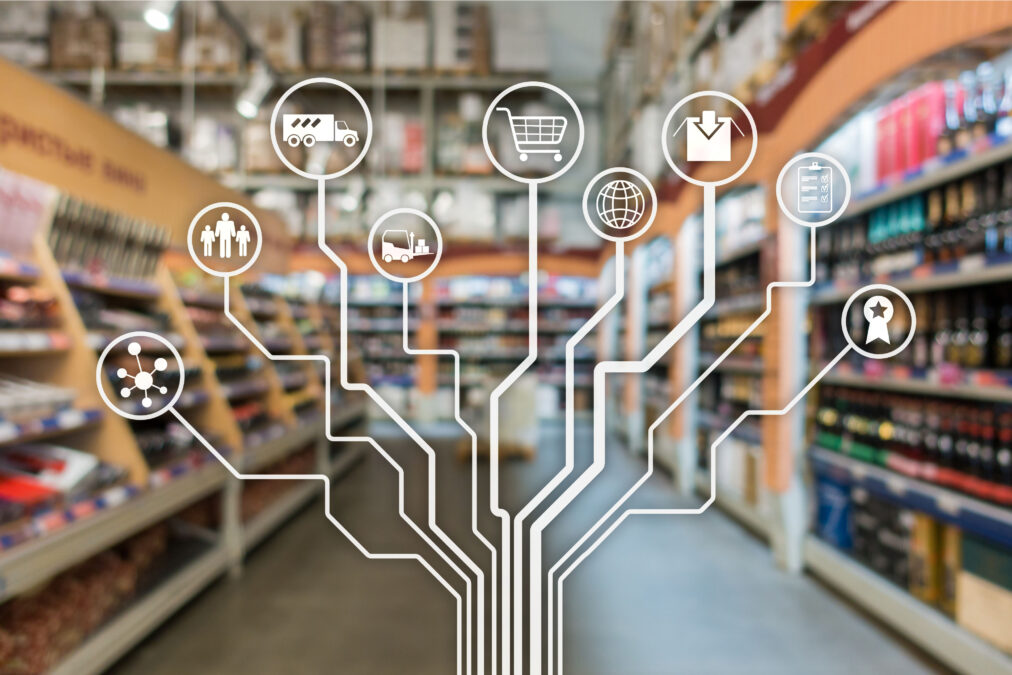For retailers, the year goes in peaks and troughs and the November-December shopping period – including Black Friday and Cyber Monday sales and the Christmas shopping frenzy – certainly counts as a peak.
Whether a retailer is online, bricks and mortar, or increasingly both, this period sees them doing all they can to ensure that their supply chain and distribution network are in the best possible position for the Christmas shopping rush.
Christmas is the shopping highlight of the year for many families. According to research by vouchercodes.co.uk, British families expect to spend an average of £796 celebrating Christmas this year, £595 of which is expected to be presents. In 2014, more than £2 billion was spent in the four days leading up to Christmas alone, putting retailers under huge pressure to have products on the shelves.
However, in this day and age, the challenge for retailers does not stop there. Customers are increasingly shopping online, on their smartphones and tablets, and this gives retailers the additional complexity of delivering goods.
>See also: How to avoid CRM implementation mistakes
Last Christmas period, Capgemini calculated UK shoppers spent £21.6 billion online on gifts, which was in itself a 13% jump on the year before and that number is expected to jump considerably this year.
This proliferation of channels and immediacy of contact means that increasingly customers are demanding instant satisfaction and personalisation of offerings. In a recent Loudhouse global survey of 800 senior sales executives, including in the retail space, around half (47%) said that customers are demanding a more personalised approach to the sales process.
This means that getting the supply chain right and having the right products available at the right times is essential. This is particularly true at a peak time such as holidays. However, these multiple points of possible customer engagement also provide retailers with an unparalleled opportunity to gain insight into their customer base.
Customer relationship management (CRM) technologies can help retailers gain insight from all of these channels, analyse it and as a result streamline supply chain management in the following three ways.
1. Stock optimisation
Across different geographies, the needs of various stores at Christmas might be quite different – but without insight into customers, it is hard to paint a true profile of each individual store.
A one-size-fits-all approach in supply chain can end up over-serving some customers and under-serving others at the expense of profit and customer satisfaction. For example, demand for different garment sizes might vary dramatically across a region, resulting in some being sold out fast. By looking at customer data, optimising stock for the needs of that particular store results in satisfied customers.
2. Personalisation
The retailers that use their data to learn about their customers and prospects, and develop personalised products, services and offers uniquely tailored for them are the ones who will stand out from the crowd. Personalised suggestions and available products, particularly at Christmas time, will ensure customer loyalty at key times like nothing else.
3. Delivery
Home delivery around Christmas time is one of the big headaches of retailers. However, it is also something that customer insight and predictive analytics can support. Identifying customer ordering and delivery trends, both individually and at scale helps to minimise the number of parcels that are not delivered in time for Christmas.
>See also: Is the data in your CRM a ticking time bomb?
CRM technologies can help retailers optimise their inventory management in the run-up to busy holiday periods, but moreover, the dividends of listening to customers at every contact point possible and analysing this intelligence will pay off all year.
However, not all CRM systems are up to this task. To give adequate support, nowadays retails need CRM system needs to go ‘beyond CRM’. Managing customer calls, communication and sales is all very well and good, but it is just one small component of a broader, more complex customer story.
To go beyond CRM a system needs to be able to have a front office that can contextualise an offer to a customer (based on current location, activity etc.), engage in web or social commerce, and deliver a social customer service above and beyond the traditional marketing sales and service functions.
It must also be able to link together the front and back office in real-time – linking people, inventory, supply chain, pricing, and customers. Moreover, all this needs to happen through a single view of the customer for all interactions (be they on Facebook, in-store or through an app). Using a CRM system that encapsulates this varied information will help to build lasting relationships beyond the holiday season.
Retailers should take advantage of peak times of activity to gather as much information as possible about customers and test systems, but they should also extend this approach to the rest of the year. Only then will this customer insight help secure loyalty all year round.
Rhiannon Prothero, marketing director, SAP UKI










